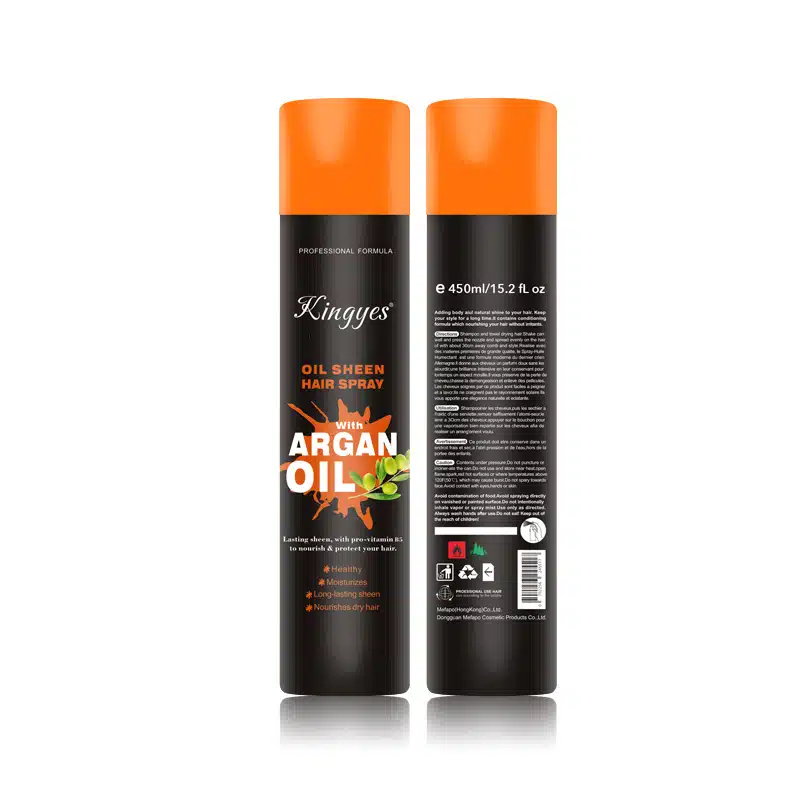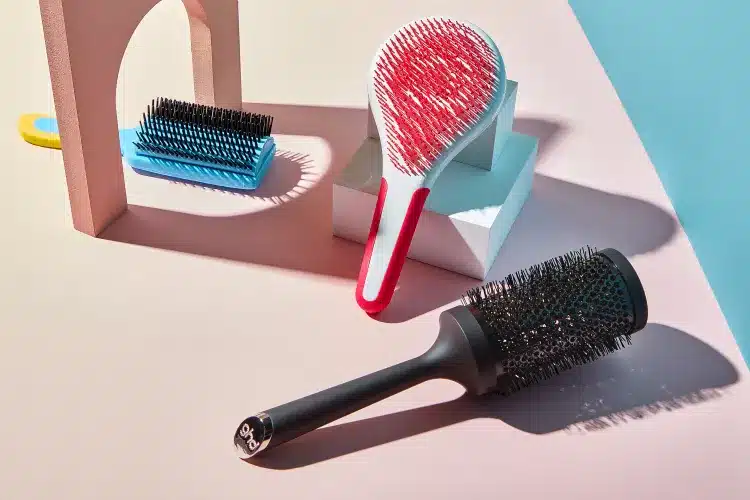
¿Cuándo debo utilizar aceite capilar?
Índice
Tanto si quieres domar el encrespamiento, dar brillo o reparar el cabello dañado, el aceite capilar adecuado puede marcar la diferencia. Pero, ¿cuál es el mejor momento para utilizar un aceite capilar y obtener resultados óptimos? En esta guía, exploraremos los distintos tipos de aceites capilares disponibles, los momentos ideales para aplicarlos y cómo pueden hacer maravillas en distintos tipos de cabello. Si tienes problemas de sequedad capilar, encrespamiento o simplemente quieres una melena más suave y sana, sigue leyendo para descubrir la rutina de aceites capilares perfecta para ti.
¿Por qué utilizar aceite capilar?
El aceite capilar es algo más que un producto cosmético; es un tratamiento vital que puede transformar la textura, el aspecto y la salud de su cabello. Los principales beneficios del uso de aceite capilar son nutritivo el pelo, hidratante hebras secas, y añadiendo brillo y suavidad. Muchos aceites, como aceite de argán, aceite de ricinoy aceite de cocoson ricos en nutrientes que penetran en la cutícula del cabello y reparar daños del peinado con calor, el estrés ambiental y los tratamientos químicos.
Si se utiliza correctamente, el aceite capilar puede ayudarte a conseguir un cabello suave y manejable, con un tacto tan agradable como su aspecto. Pero saber cuándo aplicar el aceite es crucial para evitar que el cabello se apelmace o se acumule en exceso. En las siguientes secciones, analizaremos los mejores momentos para incorporar el aceite capilar a tu rutina y el tipo adecuado para tus necesidades capilares.
¿Cuáles son los ingredientes clave del aceite capilar?
Conocer los ingredientes clave del aceite capilar puede ayudarte a elegir la mejor opción para tu tipo de cabello. Muchos aceites ofrecen diferentes beneficios, desde hidratante y hidratante a reforzar y proteger. Estos son algunos de los ingredientes clave que se suelen encontrar en los aceites nutritivos para el cabello:
- Aceite de argán: Conocido por su capacidad de nutrir e hidratar el cabello. El aceite de argán también ayuda a reducir el encrespamiento y dar brillo.
- Aceite de ricino: Este aceite espeso es ideal para promover el crecimiento del cabello y nutrir el cuero cabelludo.
- Aceite de coco: Excelente para penetrar en el tallo del cabello y proporcionar una profunda humedad.
- Aceite de pepitas de uva: Una opción más ligera, perfecta para pelo fino o pelo fino que necesitan una fórmula ligera.
- Aceite de jojoba: Conocido por su capacidad para imitar los aceites naturales producidos por el cuero cabelludo, por lo que es ideal para cuero cabelludo seco y añadiendo brillo sin la pesadez.
Cada ingrediente tiene propiedades únicas que responden a necesidades diferentes. Si conoces estos ingredientes, podrás elegir el aceite que mejor se adapte a la textura de tu cabello y al resultado deseado.
¿Con qué frecuencia debo aplicar aceite capilar?
Una de las preguntas más frecuentes sobre el aceite capilar es: ¿con qué frecuencia debe aplicarse? La frecuencia depende de tipo de cabello, texturay preocupaciones. He aquí una guía general:
- Para cabellos secos: Si tiene cabello secoSe recomienda utilizar aceite capilar cada vez que te laves el pelo. Aplicarlo mientras el pelo está todavía húmedo puede ayudar a sellar la humedad.
- Para cabellos finos: Si tiene pelo finoSi tu cabello está muy dañado, puedes utilizar aceite capilar con moderación. Una pequeña cantidad puede ayudar a evitar los cabellos rebeldes y aportar suavidad sin apelmazar el cabello.
- Para cabellos gruesos o ásperos: Puede beneficiarse del uso de aceite capilar con más frecuencia, especialmente para hidrato y nutrir el cabello, ya que el cabello grueso tiende a absorber más grasa.
- Para cabellos teñidos: Si tu pelo está colorEl aceite capilar puede ayudar a restaurar la hidratación, evitar dañosy mantener la salud del cabello. Aplicación de una aceite nutritivo para el cabello como Tratamiento Moroccanoil es una excelente opción para cabello dañado.
En general, la aplicación de aceite capilar 2-3 veces por semana funciona bien para la mayoría de los tipos de cabello. Sin embargo, no dudes en adaptarlo a las necesidades específicas de tu cabello.
¿El aceite capilar es adecuado para todo tipo de cabellos?
El aceite capilar es muy versátil, pero es importante saber si es adecuado para cada caso concreto. tipo de cabello. He aquí un desglose de cómo los diferentes tipos de cabello pueden beneficiarse de aceite para el cabello:
- Cabello fino: Si tiene pelo finoelija una ingrávido o aceite capilar ligerocomo Aceite Capilar Ingrávido Verb Ghost o Aceite capilar con miel Gisou. Estos aceites aportan hidratación sin engrasar ni apelmazar el cabello.
- Cabello grueso: Para gruesa o cabello gruesoaceites más pesados como aceite de ricino o moroccanoil tratamiento original pueden ofrecer la nutrición e hidratación necesarias para controlar el encrespamiento y aportar suavidad.
- Cabello teñido: Cabello teñido suele ser más propensa a la sequedad y los daños. Una mezcla de aceites nutritivos con aceite de argán, aceite de jojobao aceite de romero puede ayudar a mantener tus hebras sanas y brillantes.
Sea cual sea su tipo de cabello, existe un aceite capilar que puede hacer maravillas en su caso. Seleccionar el aceite adecuado en función de las necesidades específicas de tu cabello es la clave para sacarle el máximo partido a este tratamiento capilar.
Cómo utilizar el aceite capilar para cabello seco
Si tiene cabello seco, aceite capilar puede cambiar las reglas del juego. Aplicarlo a cabello húmedo después del lavado es una de las formas más eficaces de retener la humedad y evitar la sequedad. A continuación se explica cómo utilizar el aceite capilar para cabello seco:
- Después del champú: Aplica unas gotas de aceite capilar sobre el cabello húmedo antes de peinarlo. Esto ayuda a infundir humedad en cada mechón y mantiene el cabello hidratado.
- Longitud media hasta los extremos: Centrar la aplicación en el termina del cabello, donde tiende a ser más seco y propenso a las puntas abiertas. Evita aplicar demasiado aceite cerca del cuero cabelludo para evitar que se engrase.
- Sin aclarado o con aclarado: Puede dejar el aceite como tratamiento sin aclarado o acláralo después de unos minutos para una sensación más ligera.
Utilizando aceite nutritivo para el cabello sobre el cabello seco es una suave encrespamiento y dar brillo a las hebras apagadas, dándoles un acabado sano y brillante.
¿Debo utilizar aceite capilar en el cuero cabelludo?
Aplicación de aceite capilar a su cuero cabelludo puede ayudar a mejorar su salud proporcionando hidratación y estimulando el crecimiento del cabello. Aceites como aceite de ricino y aceite de jojoba son excelentes para nutrir el cuero cabelludo, mientras que aceite del árbol del té es estupendo para tratar la caspa. A continuación te indicamos cuándo debes utilizar aceite capilar en el cuero cabelludo:
- Cuero cabelludo seco: Si tiene un cuero cabelludo secoLa aplicación de aceite capilar puede ayudar a restaurar la hidratación y el equilibrio. Masajea suavemente el cuero cabelludo con el aceite antes de lavarlo para un tratamiento hidratante y calmante.
- Crecimiento del cabello: Aceites como aceite de ricino y aceite de romero se utilizan a menudo para promover crecimiento del vello estimulando el cuero cabelludo y mejorando la circulación.
- Tratamiento del cuero cabelludo: Para un tratamiento profundo del cuero cabelludo, deje actuar el aceite durante 20-30 minutos antes de lavarlo con champú.
El uso de aceite en el cuero cabelludo puede tratar problemas como caspa, picory sequedadDeja el cuero cabelludo nutrido y el cabello más fuerte.
¿Cuál es la diferencia entre los aceites capilares pesados y los ligeros?
Elegir entre un pesado o ligero aceite depende de su tipo de cabello y efecto deseado. He aquí una comparación rápida:
- Aceites pesados: Estos aceites son ideales para gruesa, gruesoo cabello dañado. Proporcionan una hidratación intensa y alimentaciónpor lo que son perfectas para tratar el cabello seco o encrespado. Aceite de ricino, aceite de cocoy tratamiento moroccanoil son ejemplos de petróleos pesados.
- Aceites ligeros: Si tiene pelo fino o desea un efecto sutil, aceites ligeros como Verbo Fantasma Ingrávido Aceite capilar o Aceite capilar con miel Gisou son perfectos. Estos aceites hidratan y suavizan el cabello sin apelmazarlo ni dejar residuos.
Comprender si tu cabello necesita un aceite pesado o ligero te ayudará a evitar
Preguntas frecuentes
¿Puedo utilizar aceite capilar todos los días?
Sí, puedes utilizar aceite capilar a diario, sobre todo si tu cabello está seco o dañado. Para pelo finoUtilizar con moderación.¿Se puede utilizar el aceite capilar como protector térmico?
Algunos aceites como Moroccanoil y Olaplex nº 7 puede proporcionar protección contra el calorreduciendo los daños por calor.¿Ayuda el aceite capilar a combatir la caspa?
Sí, aceites como aceite del árbol del té y aceite de romero puede ayudar a calmar e hidratar el cuero cabelludo, reduciendo los síntomas de la caspa.¿Puedo aplicar aceite capilar sobre el cabello húmedo?
Sí, aplicar aceite capilar a cabello húmedo ayuda a retener la humedad y protege contra los daños durante el peinado.
Principales conclusiones:
- Elegir bien aceite capilar basado en su tipo de cabello y necesita.
- Utiliza aceite capilar regularmente para hidratación, control del encrespamientoy reparar.
- Los aceites ligeros son ideales para pelo fino, mientras que los aceites más pesados se adaptan gruesa o cabello grueso.
- Aplique el aceite capilar sobre el cabello húmedo para obtener la máxima eficacia.
Comentarios

¿Qué cosas funcionan como champú seco?
¿Se te ha acabado tu champú en seco favorito y necesitas una solución rápida?

¿Cómo saber si es caspa o producto capilar?
El cuero cabelludo escamoso y con picores puede ser frustrante.

Cómo elegir el cepillo adecuado
Los productos de peluquería son fórmulas especializadas diseñadas para modificar, realzar y mantener el peinado, atendiendo a una amplia gama de tipos de cabello y preferencias de peinado.

¿Cuál es la diferencia entre la base de maquillaje y la base líquida?
¿Confundido a la hora de elegir entre maquillaje en polvo y maquillaje líquido?

¿Para qué sirve el spray hidratante?
¿Te has preguntado alguna vez para qué sirve un spray hidratante?
- +86 151 1839 7303
- [email protected]
- L-D 07:00-23:00
Etiquetas

How to Choose a Reliable Cosmetic OEM Manufacturer in China?
If you want to develop a spray it is ESSENTIAL to find a manufacturer, with expertise in this area.
You possess a concept.
Step 4: Comprehend the Rules to Your Property.

How to Get Hair Dye Off Skin: The Only Guide You Need
Then, you look closer.
There is a spot on your head. It is not hair. It is your skin. It is blue. Or maybe it is red.

How Often Should You Wash Your Hair? The Ultimate Guide
You look at your hair.
It looks flat. It looks dull.
You touch your roots.






